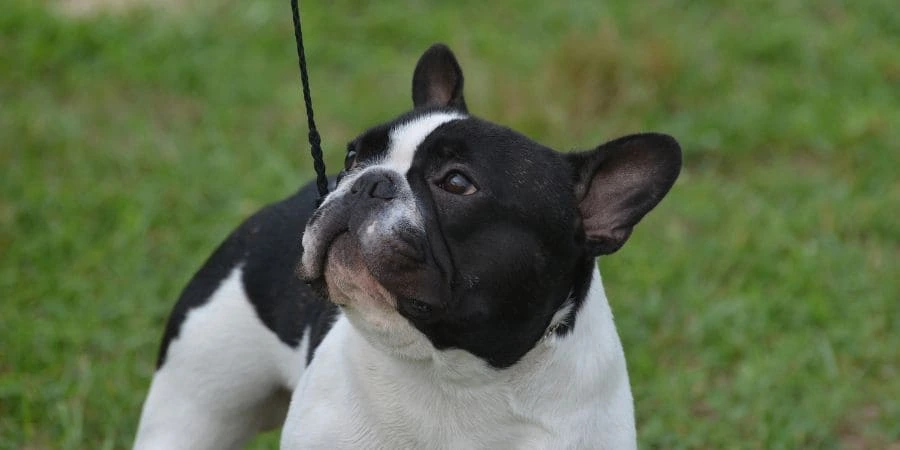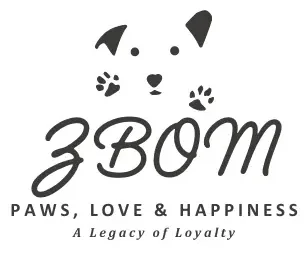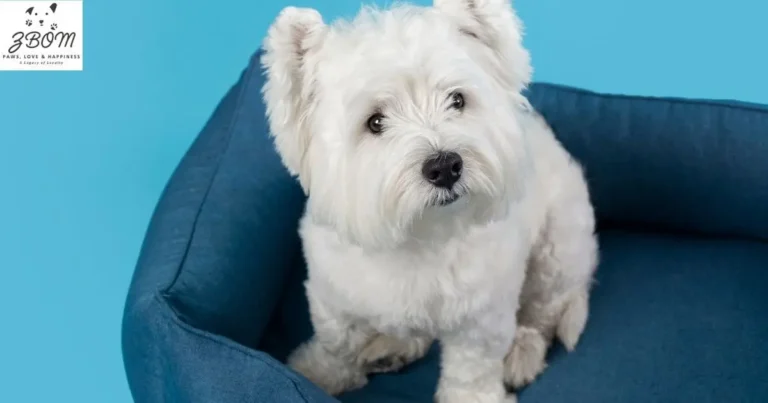
A Comprehensive Guide to Understanding EM EM French Bulldog DNA
A Comprehensive Guide to Understanding EM EM French Bulldog DNA he French Bulldog is one of the most beloved breeds in the world, often affectionately called the Frenchie. In dog breeding, one of the most fascinating aspects of this breed is its wide range of coat colors. From classic shades to rare and exotic coat colors, every Frenchie showcases a unique look that reflects its genetic makeup.
When studying French Bulldog colors, it’s important to understand the role of French Bulldog genetics. The DNA of a Frenchie determines not only its color but also its pattern and texture. By learning the basics of dog genetics, breeders can make informed choices when planning future litters.
A detailed color guide can help identify which genes are responsible for specific shades. This breeder guide serves as a roadmap for anyone interested in French Bulldog breeding, allowing them to predict outcomes more accurately. Tools like a coat color calculator or breeding calculator can further simplify this process, A Comprehensive Guide to Understanding EM EM French Bulldog DNA showing possible color varieties that a pair of dogs may produce.
The exotic French Bulldog often stands out because of its rare hues and distinct French Bulldog coat patterns. To truly appreciate these unique features, A Comprehensive Guide to Understanding EM EM French Bulldog DNA breeders should focus on understanding French Bulldog DNA and how different genes interact to create striking French Bulldog color genetics and beautiful French Bulldog color combinations.
Short answer about: How French Bulldog Colors & DNA Works
French Bulldog coat colors are determined by their DNA, which carries specific genes inherited from both parents. Each dog has two copies of every gene, A Comprehensive Guide to Understanding EM EM French Bulldog DNA one from the mother and one from the father, stored at particular locations on their chromosomes called loci. These genes can be dominant or recessive, A Comprehensive Guide to Understanding EM EM French Bulldog DNA which affects whether a trait is visibly expressed. Dominant genes require only one copy to show in the dog’s coat, while recessive genes require two copies.
Also Read: How I Got Started with Full Breed French Bulldog Price
How French Bulldog Colors & DNA Works
Understanding french bulldog colors begins with the science behind french bulldog dna and french bulldog genetics. Every frenchie coat colors variation results from specific combinations within the dog dna locus, where
french bulldog alleles are stored. These alleles determine how dominant and recessive genes express in the Frenchie’s coat, shaping the appearance of rare and standard shades.
For instance, a blue french bulldog has two copies of the dilute gene at the d locus (d/d), which lightens the coat. Similarly, a cocoa french bulldog carries two copies of the cocoa gene at the co locus (co/co). The testable chocolate french bulldog color comes from the b locus (b/b),A Comprehensive Guide to Understanding EM EM French Bulldog DNA while the cream french bulldog color is influenced by the e locus. A pied french bulldog’s patches are controlled by the s locus, and the merle french bulldog pattern is determined by the m locus, which creates the distinctive marbled effect.

The brindle french bulldog inherits its striping pattern from the k locus (Kbr), while the a locus controls patterns like ay fawn frenchie, at tan point frenchie, and black french bulldog (a/a). When a Frenchie carries both Ay and At at the a locus, it results in a sable french bulldog coat. Other loci like the l locus and i locus also contribute to coat texture and intensity.
Breeders use knowledge of color dna to plan french bulldog breeding programs that enhance desired traits and maintain health. A Comprehensive Guide to Understanding EM EM French Bulldog DNA Understanding these loci combinations ensures predictable coat color inheritance, allowing breeders and owners to appreciate the fascinating world of french bulldog genetics and color diversity.
The Standard French Bulldog Colors And Patterns
1. Brindle French Bulldog Pattern
The brindle french bulldog pattern is one of the most recognized and is created by the brindle gene located at the k locus. Also known as the dominant black gene, this genetic trait is expressed with even a single copy of kbr. A dog with one copy is kbr/ky A Comprehensive Guide to Understanding EM EM French Bulldog DNA , while a dog with no brindle copies is kyky. The coat can appear as tiger brindle when the fawn hairs are dominant or as reverse brindle when the light hairs are more visible.
Also Read: How to Determine the Price of an Isabella French Bulldog
2. Cream French Bulldog
The cream french bulldog carries two recessive copies of the cream gene at the e locus, written as e/e. This produces a uniform, pale coat that can resemble a light fawn french bulldog, but genetically it is different. A true cream Frenchie has a consistent cream color throughout, with a black nose, black eye rims, black paw pads, and black lips, giving them a clean, elegant look.
3. Piebald French Bulldog Pattern
A pied french bulldog displays the piebald pattern, which is caused by the pied gene found on the s locus. To visually show this pattern, the genetic code must be s/s. A pied carrier with only one copy will have limited white spotting. Variations include extreme pied, A Comprehensive Guide to Understanding EM EM French Bulldog DNA where the coat becomes almost fully white, saddle pied, irish pied, and blanket pied, each defined by the amount and placement of white areas on the body.
4. Black French Bulldog
The black french bulldog is determined by genetics at the a locus, often expressed as a/a. This agouti locus controls solid coloring, producing a pure, A Comprehensive Guide to Understanding EM EM French Bulldog DNA dark coat.
5. Fawn French Bulldog
The fawn french bulldog has genetic codes ay/ay or ay/a at the agouti locus, resulting in shades from light tan color to deep red fawn. These dogs often have darker features such as a black mask, giving a striking contrast.
6. Mask French Bulldog Pattern
The mask french bulldog pattern is represented by the em allele at the e locus. This melanistic mask can be expressed with just one copy of the e locus mask gene. However, the cream gene deletion can remove the mask completely if two cream genes (e/e) are present A Comprehensive Guide to Understanding EM EM French Bulldog DNA resulting in a lighter appearance without facial markings.
French Bulldog Coat Markings
French Bulldogs are admired for their wide variety of coat colors and markings that enhance their beauty and charm. According to the American Kennel Club (AKC), several officially recognized markings define the standard coat patterns seen in the breed.
Also Read: How to Find Reputable French Bulldog breeders Michigan
One of the most popular patterns is piebald, which features large white areas mixed with colored patches that can appear anywhere on the body. Another distinctive marking is the black mask, where the face, muzzle, and eyes are covered with dark pigmentation, A Comprehensive Guide to Understanding EM EM French Bulldog DNA creating a striking contrast against the rest of the coat.
Black markings are also common, appearing as small or large patches distributed randomly across the dog’s body. In contrast, white markings consist of lighter patches that can vary in size and placement, adding to the french bulldog appearance.
Among the most classic looks are brindle markings, which display dark stripes over a lighter background color. This combination gives the coat a textured and layered look, A Comprehensive Guide to Understanding EM EM French Bulldog DNA often associated with the traditional Frenchie charm.
While the AKC lists only a few officially recognized markings, there are also unrecognized markings that appear in some french bulldogs, contributing to their individuality and french bulldog uniqueness. These distinct coat patterns make every French Bulldog truly one of a kind.
Disqualified French Bulldog Coat Markings
The American Kennel Club (AKC) has specific standards for french bulldogs when it comes to coat markings. While many markings are recognized, there are also unrecognized markings that can still appear on these adorable dogs. However, in dog shows, A Comprehensive Guide to Understanding EM EM French Bulldog DNA having disqualified markings may affect your Frenchie’s eligibility to compete.
One example of these unrecognized patterns is the ticked marking. This consists of small dots or flecks of color on a white background or light-colored background, giving the dog a freckled and distinctive look.
Another pattern is the spotted marking, which features evenly distributed spots of color that vary in size and shape across the coat. A Comprehensive Guide to Understanding EM EM French Bulldog DNA These spots can create a playful appearance and enhance the dog’s individuality.
Tan points are another type of unrecognized markings that you might find on a French Bulldog. These tan or rust-colored markings usually appear on the eyebrows, A Comprehensive Guide to Understanding EM EM French Bulldog DNA cheeks, legs, and under the tail, creating a charming contrast against the main coat color.
Also Read: How to Estimate Long Haired French Bulldog Cost
Even though these markings are not approved by the AKC, they still contribute to frenchie uniqueness and frenchie charm. Owners who wish to enter AKC dog shows should ensure their pets have recognized coat markings to maintain eligibility to compete, A Comprehensive Guide to Understanding EM EM French Bulldog DNA while still appreciating the natural beauty of their distinctive French Bulldogs.
The Fad Frenchie Colors and Patterns
1. Merle French Bulldog Pattern
Among the rare French Bulldog colors, the Isabella French Bulldog color stands out as one of the most desirable. The Isabella French Bulldog is often referred to as double lilac or true lilac, created by a combination of testable chocolate b/b at the B locus and a d/d gene at the D locus. This stunning color gives the coat a soft and elegant tone.
2. Isabella French Bulldog
How Much is a Franchie, The New Shade Isabella French Bulldog color is an even rarer version of the Isabella. The New Shade Isabella French Bulldog carries two copies from the D locus, Co locus, and B locus, forming a rare coffee complexion coat. A Comprehensive Guide to Understanding EM EM French Bulldog DNA This unique blend requires (d/d), (co/co), and (b/b) to express.
3.Lilac French Bulldog
The Lilac French Bulldog color is another rare variety produced by combining the Co locus and the D locus, both in the recessive form (co/co) and (d/d). The Lilac French Bulldog has a soft purplish hue that can vary depending on the Agouti locus combinations such as Ay/a, Ay/Ay, or Ay/At, A Comprehensive Guide to Understanding EM EM French Bulldog DNA creating variations like the blue fawn. The lilac French Bulldog color code represents this genetic mix perfectly.
Next, the Fluffy Blue French Bulldog color is admired for its long coat and silvery-blue tone. A Comprehensive Guide to Understanding EM EM French Bulldog DNA The Fluffy Blue French Bulldog inherits its dilute tone from the d/d gene at the D locus, giving it that famous steel-gray appearance combined with a plush texture.

Also Read: How To Determine Black French Bulldog Cost
4. Tri French Bulldog
The Fluffy Merle French Bulldog color combines the fluffy coat trait with the marbled effect of the merle gene. The Fluffy Merle French Bulldog carries the M locus gene responsible for the Merle French Bulldog pattern, creating patches of lighter and darker pigment throughout the coat.
Within the Merle French Bulldog pattern, variations such as the Lilac Merle French Bulldog and the Chocolate Merle French Bulldog exist. These are created when the merle gene interacts with other color genes, producing visually striking coats. A Comprehensive Guide to Understanding EM EM French Bulldog DNA Dogs that carry faint or hidden merle patterns are known as phantom merle or cryptic merle, often appearing in extreme pied dogs where pigmentation is reduced.
5. Chocolate French Bulldog
The Chocolate French Bulldog is produced through the Co locus and B locus, requiring two recessive chocolate genes to show the color. The testable chocolate form (b/b) gives the coat a rich brown tone and a characteristic red eye glow in certain lighting.
6. Blue French Bulldog
The Blue French Bulldog inherits its tone from the D locus and expresses the d/d gene, creating a deep blue-gray coat. Depending on combinations at the Agouti locus, such as Ay/a, Ay/Ay, or Ay/At, the dog can appear as a blue fawn.
Also Read: How to Determine Frenchie Dog Prices Effectively
7.New Shade Isabella
Finally, the Tri French Bulldog displays combinations such as black and tan, chocolate and tan, blue and tan, lilac and tan, and merle and tan. This pattern comes from the A locus and is controlled by the At gene. Dogs with At/At or At/a express clear tan points on their coat, A Comprehensive Guide to Understanding EM EM French Bulldog DNA completing the rare and distinctive French Bulldog color spectrum.
Frenchies are Genetic Wonders
Exploring French Bulldog DNA goes far beyond simply identifying French Bulldog coat colors. Each coat shade reflects a deeper French Bulldog genetic narrative that contributes to the dog’s uniqueness. By understanding their Frenchie hues, owners can better appreciate the individual traits that make their pet special.
Moreover, studying a Frenchie’s DNA can provide insights into French Bulldog health, helping owners make informed decisions to support their dog’s well-being. A Comprehensive Guide to Understanding EM EM French Bulldog DNA Every pattern, tint, or mark in the French Bulldog shades carries a story written in their genes, making each dog one-of-a-kind.
By paying attention to these details, you not only enjoy the aesthetic appeal of their coat colors, but also connect with the fascinating genetic journey that defines your French Bulldog’s identity and health.
French Bulldog DNA Color Genes
Every French Bulldog trait is determined by genetic pairs, with one gene inherited from mom and dad genes. Some traits, such as certain French Bulldog color variations, require two copies of a gene to be expressed—these are called recessive genes. Other traits only need one copy to appear, known as dominant genes.
Understanding how recessive genes and dominant genes interact is essential for predicting French Bulldog inheritance. By studying these genetic pairs, owners and breeders can better anticipate the colors and traits that may appear in their French Bulldogs.
conculsion
Understanding EM EM French Bulldog DNA provides far more than insights into coat colors or markings—it reveals the genetic blueprint that shapes each dog’s unique appearance, temperament, and health. By exploring dominant genes, A Comprehensive Guide to Understanding EM EM French Bulldog DNA A Comprehensive Guide to Understanding EM EM French Bulldog DNA recessive genes, and how genetic pairs from mom and dad influence traits, owners and breeders gain a deeper appreciation for the complexity behind every Frenchie.
Knowledge of DNA also empowers responsible breeding practices, helping to predict coat colors, patterns, and potential health considerations while preserving the integrity of the breed. Every French Bulldog shade and pattern, from standard colors to rare variations, tells a story encoded in their genes.
Ultimately, mastering the principles of EM EM French Bulldog DNA allows enthusiasts to celebrate their dogs’ individuality while making informed choices that support the breed’s health and diversity. Each French Bulldog is a living example of how genetics shapes beauty, uniqueness, and vitality in this beloved breed.
FAQ
How do you understand your French Bulldog?
French Bulldogs are playful, adaptable, friendly, and easy to train, getting along well with children and other pets with supervised interactions.
What is the fluffy DNA on a French Bulldog?
A long coat in French Bulldogs comes from a recessive gene inherited from both parents, the l (1-4) gene at the L-locus, determining hair length.
What is the rarest Frenchie color?
The rarest colors in French Bulldogs include blue, lilac, blue and tan, chocolate and tan, with merle coats like blue merle being the rarest.
What two breeds make a French Bulldog?
The French Bulldog (Bouledogue Français) is a French breed of companion and toy dog, developed in Paris in the mid-nineteenth century via cross-breeding of Toy Bulldogs from England and Parisian ratters.
What is the most accurate DNA test for a dog?
The Embark Breed Identification Kit is a dog DNA testing kit with 99% breed ancestry accuracy for mixed breed dogs, plus relative finder and family tree.







